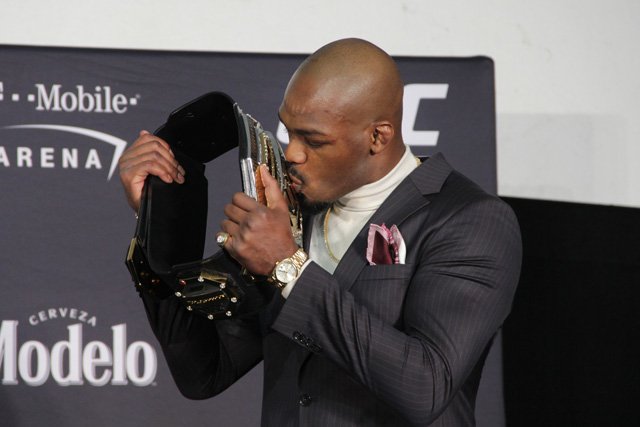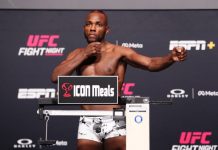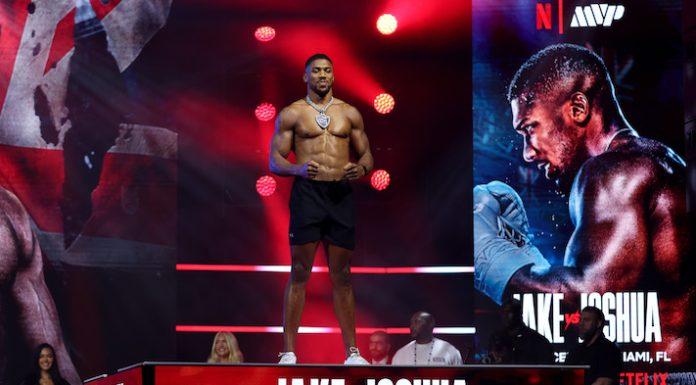
If you grew up around the time of the 94-95 baseball strike, than you’re used to athletes and owners squabbling over money. It was a work stoppage that drove fans away from sport, and as any Canadian baseball fan will tell you, it cost the Montreal Expos the World Series. Of course, there’s no way to actually know that, but we’ll insist it’s true regardless.
Battles over salary, pensions, benefits and the like are near universal in professional sports. Good luck finding an owner who isn’t interested in more money. Good luck finding a player who isn’t looking out for themselves. Sure, there’s the odd owner who is willing to spend to win, but ultimately they reap the rewards more often than not. Of course there’s the occasional player willing to take a hometown discount — and who doesn’t love those? But they’re outliers, not the norm.
Professional sports is a business, and businesses place profit on a pedestal above all else, 99 times out of 100.
So the UFC and Jon Jones butting heads over salary is really no surprise. The surprise, frankly, is that it’s taken this long. The MMA media, derided by promotion president Dana White for various misdeeds like inaccurate headlines or just plain being wimps, have been sounding the alarm for years. Fighters deserve more. They’re not spoiled baseball players whose minimum wage at the major league level was over half a million dollars a season in 2019. These are athletes who take a severe amount of physical damage, who are sometimes fighting for as little as $10,000 in the sport’s biggest promotion.
Minus expenses.
Which brings us to Jones’ latest revelations. Which are no small surprise if you work in the MMA world, or even pay close attention. Jones, who has been fighting the UFC over pay since negotiations for a fight with Francis Ngannou fell through, appeared on Steve-O’s Wild Ride podcast recently, stating that he has no desire to fight any time soon.
Instead, the promotion’s reigning light heavyweight champion said that “I have no interest in fighting in the UFC until I get paid what I believe I’m worth.”
Now, Jones has made millions with the UFC. But he’s one of the lucky few to have done so. And in terms of drawing power versus salary, in comparison to nearly every other sport, including the oft-made comparison to boxing, Jones probably isn’t earning what he could, had he gone in a direction other than MMA.
The boxing comparison isn’t perfect. But consider that for his fight against Liam Smith, Canelo Alvarez earned a guaranteed $3.5 million. The fight reportedly saw about 300,000 buys. For Jon Jones, at UFC 239 against Thiago Santos, the guaranteed money was $500,000 per the Nevada Athletic Commission.
Yikes. Of course, there are more factors at play. Including PPV dollars. But consider that Jones has historically never had a disclosed payday higher than $500,000. And consider his estimated buyrates for UFC 232 (700,000), UFC 145 (700,000), UFC 214 (860,000). While the UFC has never officially released figures, unless those estimates are way off the mark, Jones is taking home less than a quarter of disclosed pay in comparison to Canelo Alvarez — who would also be eligible for PPV money.
That’s just Jones, one of the promotion’s biggest stars, who Dana White has repeatedly defended as the greatest of all time. The UFC has historically butted heads with everyone from Nate Diaz to Conor McGregor to Jorge Masvidal to Georges St. Pierre over the subject of money. Now take Jones’ other statements into consideration.
“Most of the guys who are doing the absolute worst are not in the position that they can say publicly, ‘I have a second job, I’m borrowing money from my parents,’” Jones said on Wild Ride. “I know so many fighters who are living in the Jackson-Wink MMA gym because they can’t afford to have their own apartment, and they’re UFC fighters. So this is sad.”
Now imagine the back-up catcher for the Toronto Blue Jays living in the team’s training facility. See a problem yet? MMA is a sport where if you don’t win, you lose half your money. When you’re underpaid from the start, staying in the sport, having a career in it, becomes a problem. Part-time jobs should not be required for established fighters in the largest MMA promotion in the world, yet here we are.
Again, this is nothing new for those of us who follow the sport day-by-day, or who work in it. So what have we really learned from Jon Jones’ latest revelations about fighter pay?
Nothing we didn’t already know, sadly.
Maybe we’ll start to see change. Jones, for all his foibles, seems to be taking a reasonable approach with this. “I’m not asking for anything outrageous, and I know we’re in a pandemic, and I know when you’re a multimillionaire and you’re asking for more, it makes you seem like this greedy person,” he told Steve-O. “I’m very aware of all of this, but I’m also very aware that I have the voice and the platform to make change.”
Could this be a sign of a maturing Jon Jones? “If I have to have a bad relationship with Dana, sit out for two years, three years, to bring light to what’s happening, then these are the things people remember you for more than winning belts,” he later added. “I stood for the younger fighters.”
Of course, we’ve been here before. Remember the MMAAA, the Mixed Martial Arts Athletes Association? With names like Cain Velasquez, Georges St. Pierre, Donald Cerrone, and others behind it, it went… absolutely nowhere.
Last year @UFC paid $55.4M to its Executives/staff. Nearly 20% more than they paid to every UFC fighter show+win in the Octagon. @Danawhite?
— The MMAAA (@Themmaaa) December 22, 2016
Of course, the optics of that effort weren’t great, what with Bjorn Rebney, a former promoter, involved. But the point is, change in MMA has come at a glacial pace. Jones is one man, and one man alone cannot change the system.
Having said that, however, you have to start somewhere.




















